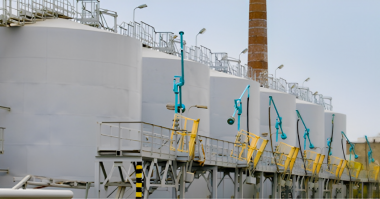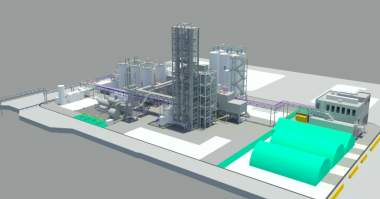Chemical manufacture includes some of the most complex industrial processes in the world. In fact, chemical-manufacturing processes can be so intricate that there are several “unit operations” within an overall process. These may include cracking, distillation and evaporation, gas absorption, scrubbing and solvent extraction, among others.
Within that family of unit operations, there is one that stands out above the others in its importance to the total manufacturing process: Transferring. Simply put, transferring is nothing more than the process of transporting fluid from one point to another. In the real world of chemical manufacturing, however, transferring is o much more.
While many unit operations in chemical manufacturing pertain to one specific application within a much greater whole, fluid transfer is a jack-of-all-trades, with responsibilities all along the chemical-production chain. Because of the importance of the myriad transferring operations within the chemical-manufacturing process, facility operators must identify the best pumping technology for the job, one that possesses the versatility to perform reliably and efficiently at any number of points in the production regime.
For many years, the go-to technology for the chemical-transfer process has been the centrifugal pump, for a few reasons:
- Centrifugal pumps perform well when handling water-like fluids
- The technology is well-known for its use in chemical production, making it a “no-brainer” choice
- Initial cost is perceived to be lower than for other types of pumping technologies
In reality, positive displacement (PD) pump technologies—most notably the sliding vane and eccentric disc varieties—can quantifiably counteract the supposed advantages offered by centrifugal pumps:
- PD pumps can move fluids that are not only higher in viscosity, but also those that range from liquefied gases to water-like fluids (sliding vane) and medium to very-viscous fluids (eccentric disc and sliding vane)
- PD technologies have a comparable history of operating successful in chemical plants
- Initial costs can be similar to those of centrifugal pumps when all equipment, accessories and controllers are included, with oftentimes a lower total cost of ownership over the life of the pump
Maybe most importantly, unlike centrifugal pumps, the design of PD pumps allows them to produce a constant flow at a given speed, no matter what the application’s discharge pressure is. In other words, PD pumps are constant-flow machines, which is critical since most chemical-manufacture applications require precise dosing rates.
For more details on this, please download the “Positive Displacement vs. Centrifugal Pumps In Transfer Operations in Chemical Manufacturing” white paper from Pump Solutions Group (PSG®).
Two operating companies within the Pump Solutions Group (PSG), Oakbrook Terrace, IL, USA, offer sliding vane or eccentric disc pump technologies that have been designed to be a front-of-mind choice in chemical-transfer applications: Blackmer®, Grand Rapids, MI, USA, and Mouvex®, Auxerre, France.
Blackmer offers the SNP Series Sliding Vane Pump, a stainless-steel model ideal for handling a wide variety of corrosive or caustic fluids with varying viscosities. Mouvex features a pair of pump models for chemical-transfer applications: the A-Series, which maintain its initial performance level over time without any adjustment, thanks to an automatic clearance make-up system; and the SLC Series, a seal-less, all-stainless-steel model with a double bellows that ensures durability, safety and total product containment.
For years, centrifugal pumps have proven to be reliable workhorses in many aspects of chemical manufacturing, but when the fluid-transferring process is looked at specifically, the benefits of centrifugal pump performance begin to wane. That’s why, for fluid transfer in chemical manufacturing, plant operators should be willing to consider PD pumps for their fluid-handling needs. Their overall design and method of operation make them ideal for a wide array of transfer applications, while they will also help optimize the bottom line.
We are always interested in hearing about any equipment-related successes you have had in your operations. If there are any recent instances where a pump has helped optimize your production operations, no matter the industry, please send me an email at tom.zuckett@psgdover.com.
** This article was written by Tom Zuckett and Edison Brito.




Comments